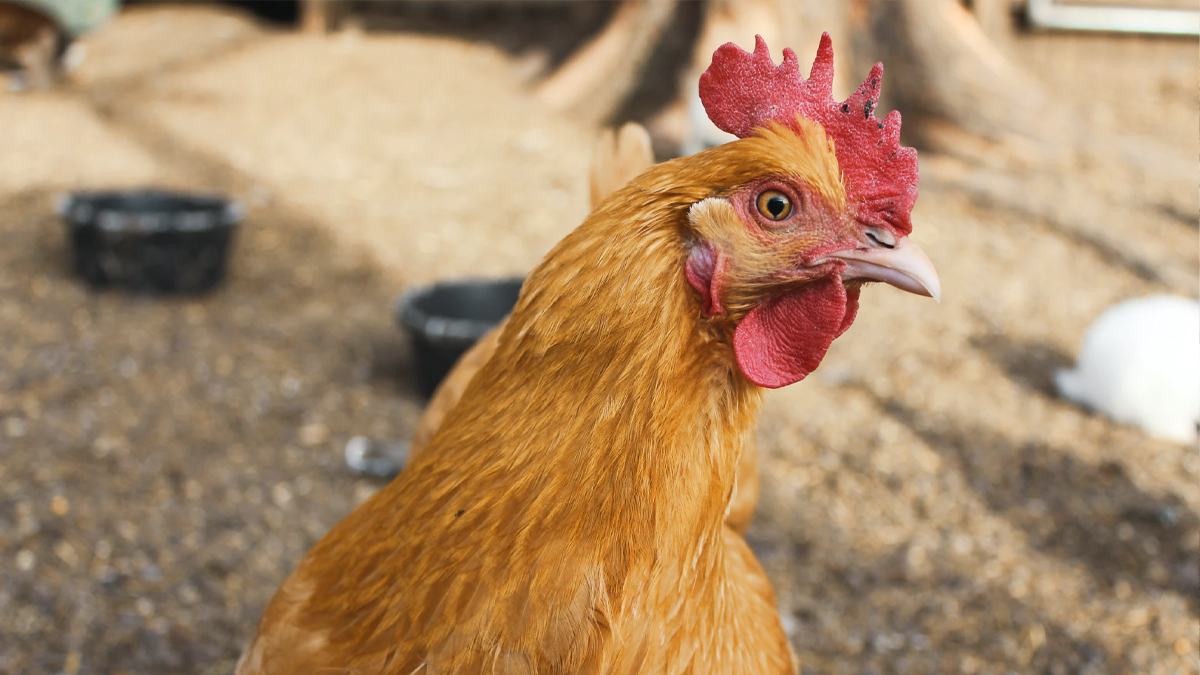on
Chickens can be raised in almost any climate and location. They are just as popular in town as they are in the country. All they need is the right type of housing and the proper amount of space to explore and you will have happy hens ready to provide you with fresh, healthy eggs.
To free-range or not to free-range?
If you live in town free-ranging your hens may or may not be possible depending on city ordinances and how friendly your girls are. In the country, it is more likely to depend on predator pressure.
Studies done by Mother Earth News have shown that eggs from free-range chickens are much healthier than grocery store eggs. On the other hand, chickens can be messy. Many people end up resorting to runs simply because they were tired of cleaning chicken poo off their porch. They can also destroy a garden by eating the produce and pulling or scratching up seedlings. Then again it can be pretty entertaining to watch them roam about and get excited about finding a grasshopper.
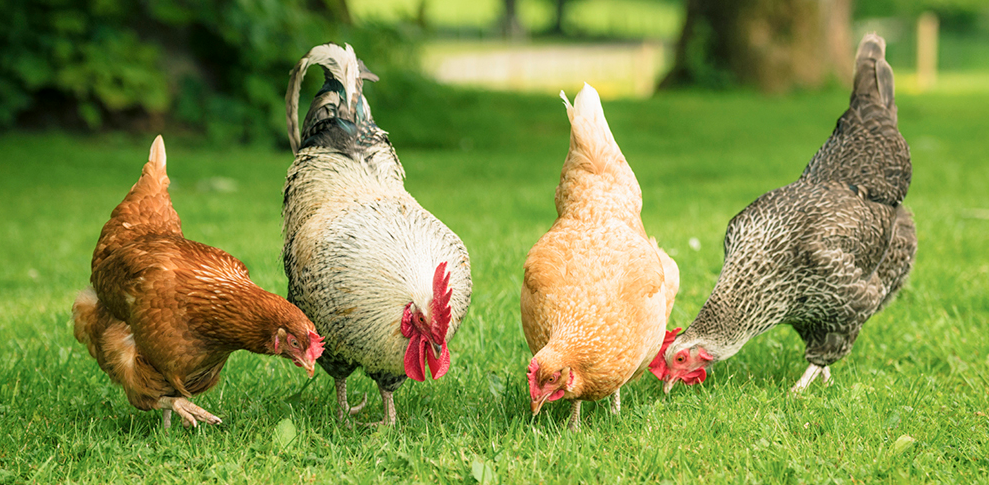
Some people have tried “chicken tractors” as a hybrid approach. Moving it to fresh pasture at least every other day. We started out with one of those, moved it daily for 6-7 months, and then we just started letting them out. I don’t know anyone outside of meat bird growers that actually keep up with moving the tractor.
In the summer months, we would let them out of their run after we got home from work so we could enjoy their antics and they got a bit of freedom to run around while loosely being supervised. Thankfully at dusk they always put themselves to bed and all we had to do was remember to close things up for the night.
Predator considerations
People often consider coyotes and foxes to be the main predators, but loose dogs and raccoons probably do more damage. Raccoons are very agile with their paws and very smart. They have no problem opening your average latch and they will kill chickens just for sport.
I still remember our first raccoon disaster and my 5-year-old daughter running to the house yelling “Fred’s head is not with his body!” when she found our rooster that morning. He not only managed to get into the coop without leaving any obvious sign, he managed to kill our rooster and two of our hens. He came back the next night, to try it again, but we were waiting for him and his bloodlust went unfulfilled.
Where we live now predators could be cougar, bobcat, coyotes or wolves. We also have bear in the area but they generally don’t tend to bother a chicken coup much.
We have lost chickens to hawks and eagles, so knowing your overhead predators is also important. We had a rooster that was very good at warning his flock and the goats heeded his “hawk, hawk” call too whenever something big flew over. We had neighbors that raised sheep on a commercial scale, and during lambing season Bald Eagles and even occasionally Golden Eagles would show up looking for an easy meal. The best way to stop this threat is to have a covered run.
No matter what type of run or coop you choose to have it is always wise to install a predator apron around the exterior so that predators can dig under and gain access to your hen house.
How many chickens?
If you live in town, the ordnance that allows you to have a backyard coop probably dictates how many chickens you can have. Usually, it is just 3-4 hens and so the coop size doesn’t need to be very large.
A productive hen will lay on average every 25-26 hours. So if you have 6 hens you are likely to get 4 eggs a day on average. Breeds with dark-colored shells will lay much slower as the dark color is the result of a slower trip through the oviduct. But those eggs are sure pretty, and many folks with a small flock enjoy having a variety of egg colors in their basket.

The colors of the eggs and the colors and characteristics of various chicken breeds and mixes makes “chicken math” almost inevitable and the person that started out saying they are only going to have 6-8 hens will soon find themselves with a dozen and wanting more. And since you don’t want to compromise your hen’s health, it is best to plan on more space than you think you need so that you don’t have to worry about overcrowding later.
The one-foot rule: For every full-size chicken you need to have at least one foot of roost space in the hen house.
The 10 square foot rule: In the run you need to provide at least 10 square feet of space per hen, unless you are allowing them to free-range most of the time.
So, if you have a 4×6 coop with two 6ft roost bars and you had a run that was 12×6, the max number of chickens you could have would be 7 – because that is the max that the run can handle. And since we never want to max out, the real number would be six hens. Now if they were going to be free-range the coop itself would handle a max of 12 birds. In order to keep 12 hens you would need a coop like the 8×18 coop and run pictured below. It has a max population of 14 chickens, so it will easily handle a dozen.
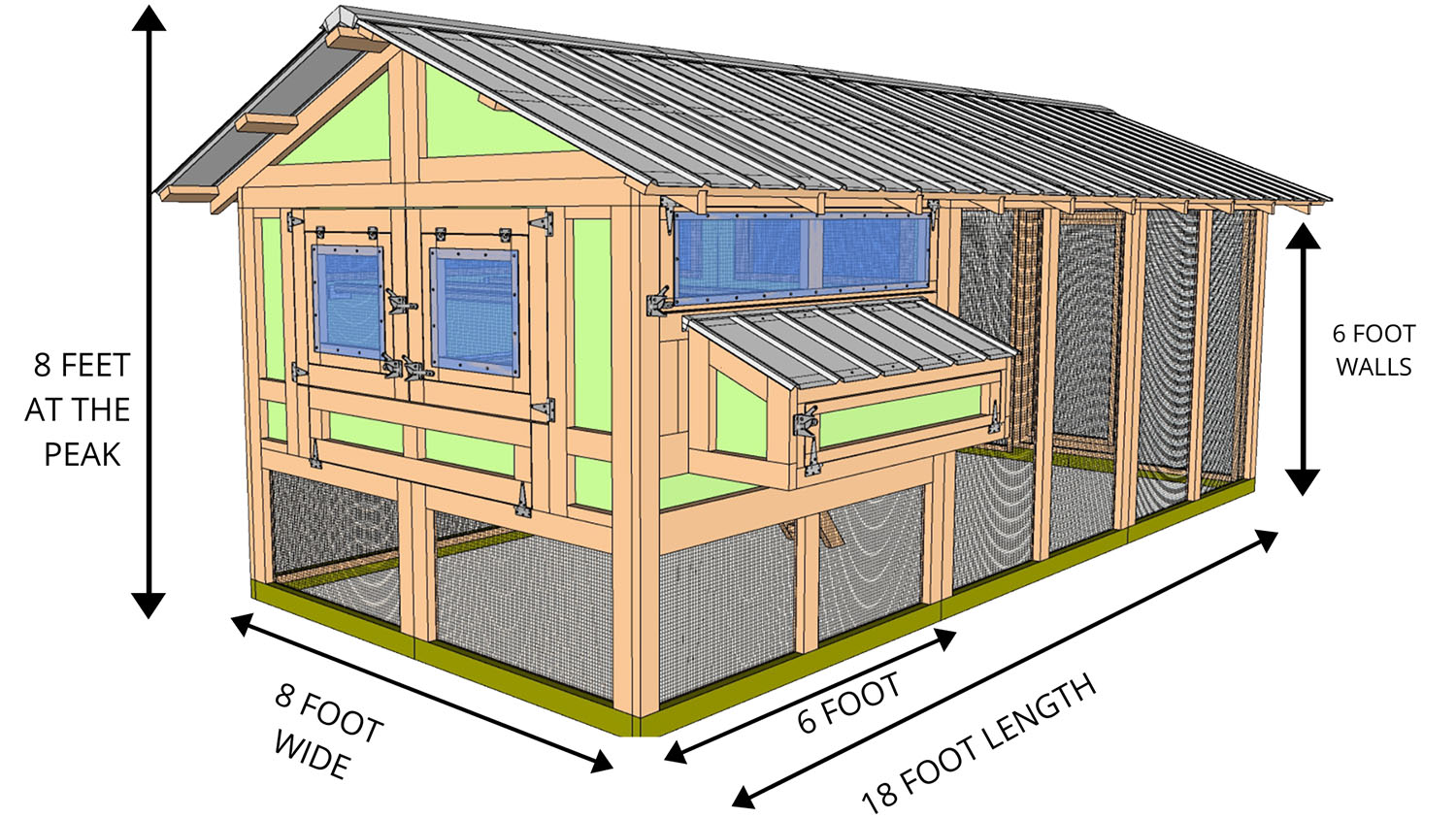
Raised hen house vs. walk-in
While you can build runs as short at 3ft, if you have a very big run it quickly becomes a pain in your back. I highly recommend a walk-in run, even if it is “just” a cattle panel hoop house that you have added hardware cloth (metal mesh) to. You will interact with your chickens more when you aren’t worried about crawling in poop.
Now, when it comes to the hen house itself. There are raised coops as shown above and walk-in styles that are basically a shed. Carolina Coops has created a hybrid of these two styles that is absolutely genius. The first time I stumbled across one of their YouTube videos (below) I was blown away by their creative use of space for storage and I found myself binge-watching their coop build videos where Matt shares a lot of construction techniques and advice about raising chickens.
So either a raised coop with room for the chickens to run underneath or a raised coup in a shed with storage underneath. My current coop is integrated into my buck barn and does not have a raised floor, but I think come summer I will be modifying it to a raised coop so that I can make use of the space underneath.
Nest boxes
The first coop I built myself some 14 years ago had an external nest box area with a lifting lid. The biggest problem I found with the lifting lid, wasn’t so much disturbing the hens as it was trying to keep water from leaking into it. So when I saw the nest boxes designed by Carolina Coops that had a drop-down side instead it was a Eureka! moment for me.
Chickens do not need individual nest boxes, and although the industry standard is to provide one box per every 3-4 hens the odds are your hens will have one or two favorites, and they all share and only use the others if their first choice is taken.
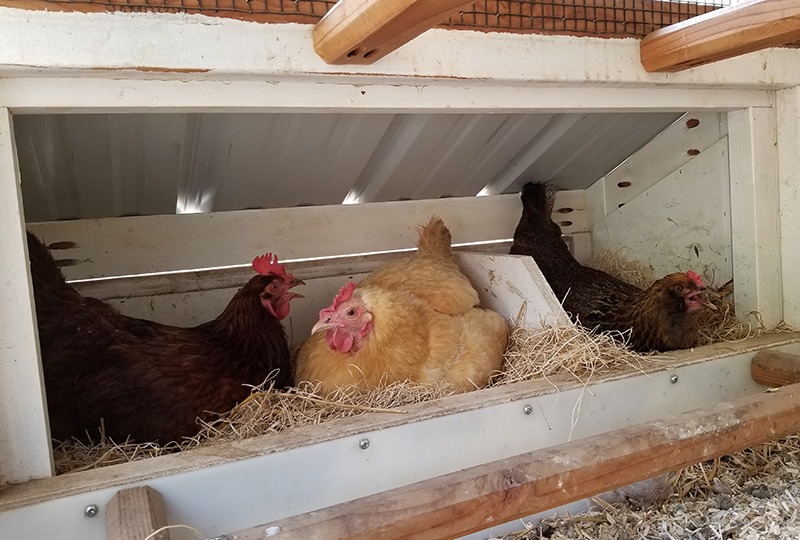
If you keep a rooster, there is the possibility that one of your hens will go broody and raise chicks. But they can go broody even if there is no rooster around to fertilize the eggs. If they do have viable eggs, then having the removable partitions between the nest boxes is a nice feature as it will give her a little more space and give you room to put a little food and water in for her. Also, you may need to block access so that the other hens don’t keep trying to lay in that nest.
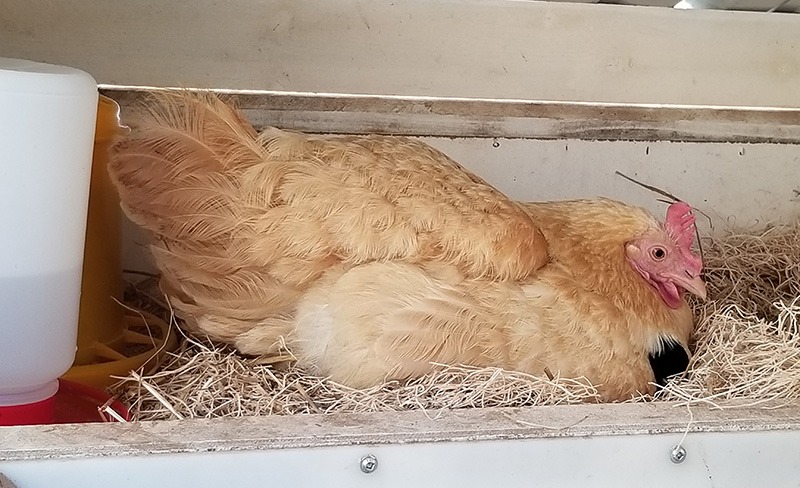
Nest box material should be straw, grass hay or anything that has long strands that mimic what you would find in any other birds nest out in nature. You also don’t need to create a nest as they will do that instinctively, just like they will instinctively know where to lay although the first couple of eggs might catch them by surprise.
If you start with chicks, you want to be sure the entrance to the nest boxes is blocked off so that they don’t develop the bad habit of roosting in the nest boxes as that can be a very messy proposition. If they only use the nesting boxes for their intended use, you can go a long time before needing to clean them out or refresh their straw.
Deep litter method
I used a modified version of the deep litter method that Carolina Coops promotes, and am intending to try their method for myself as soon as I modify my coop as it just makes sense. And instead of spending 20 minutes every 3-4 months to clean out my coop, I could only spend that amount of time once a year!
The deep litter method makes clean-up pretty simple, and Matt says that he only needs to clean out his coop once a year, and that he could probably push it to two years.
You can read more about the deep litter method and watch videos explaining it on their website.
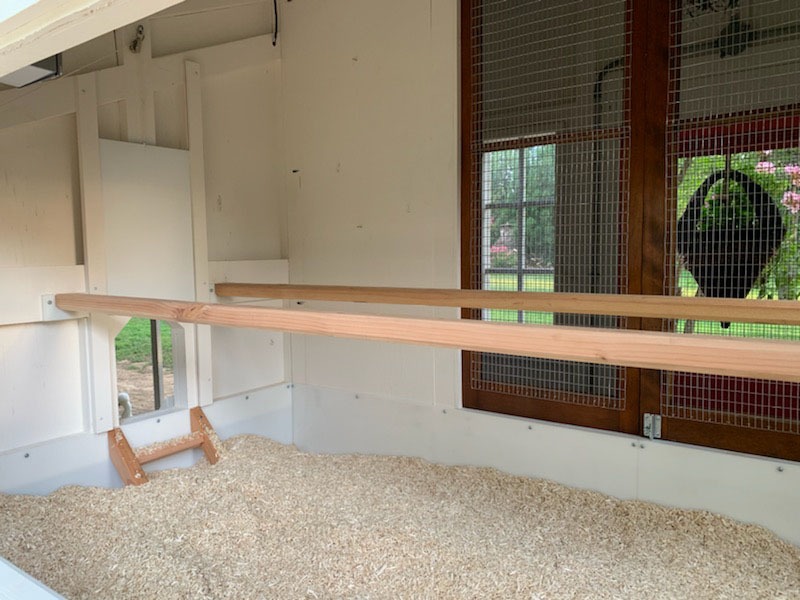
Additional tips
- Lights and heat are not necessary in your coop. Although lights on a timer can push chickens to lay more in the winter, it will burn them out sooner. (Hens typically slow down their laying after 2 years of age, the light that pushes them to lay can speed that process up.)
- Feeders and waterers should be raised to at least chest high on the chickens to keep them cleaner. You can do this by hanging the feeders in their run, or raising them off the ground securely where they can’t be knocked over.
- Chickens naturally want to go up – in the wild they roost in trees. Do not place any roosts in your run that are higher than the level it takes for them to go into their coop or they may not go inside.
- Most table scraps are ok for chickens to have but don’t feed them more than they can eat in 24hrs or you will attract predators and pests.
- Chickens like to scratch and dust bath so do not put in a concrete floor in your run. Mulch or natural dirt works well. In the fall add some dried leaf litter for them to scratch around in.
- Dust baths are important to the health of your chickens. You can put a large pan, a ring of stones or bricks to designate the bath area and fill it with things like fine sand, dry dirt, superfine grade diatomaceous earth and fine wood ash from your fireplace. Dried lavender and lemon balm are also good pest repellents and adding a handful or two will help keep the mites, mosquitos and other pests away naturally.
Enjoy your new coop!
** A special thanks to Carolina Coops for graciously allowing us to share images of their innovative coops. For more information on Carolina Coops and to see all of their options from small to large please visit their website. And don’t forget to check out their Video Chicken Show too if you want to learn more about chickens.
Get access to premium content and more!



